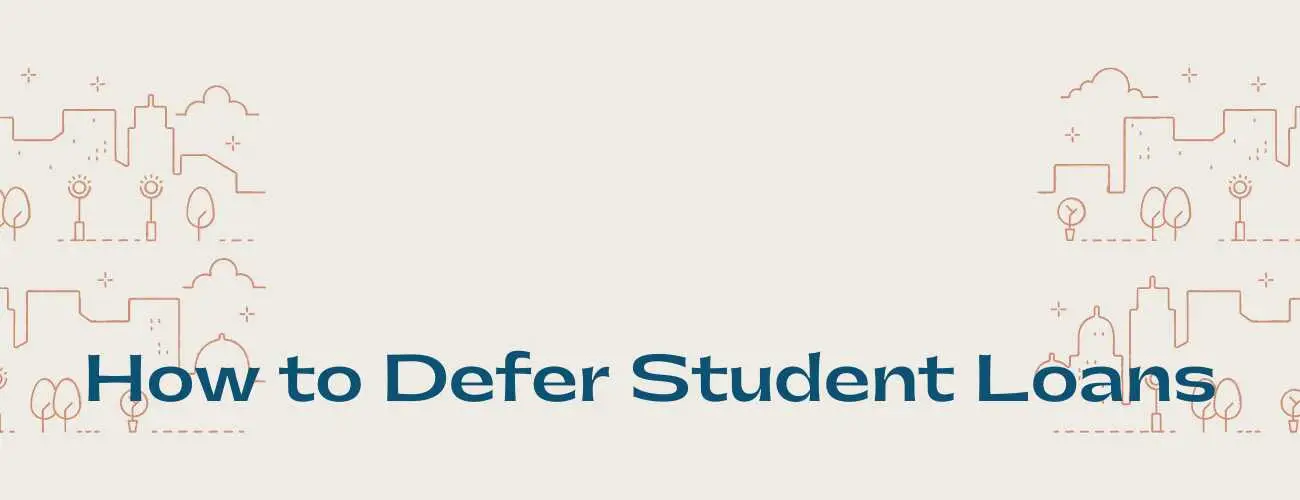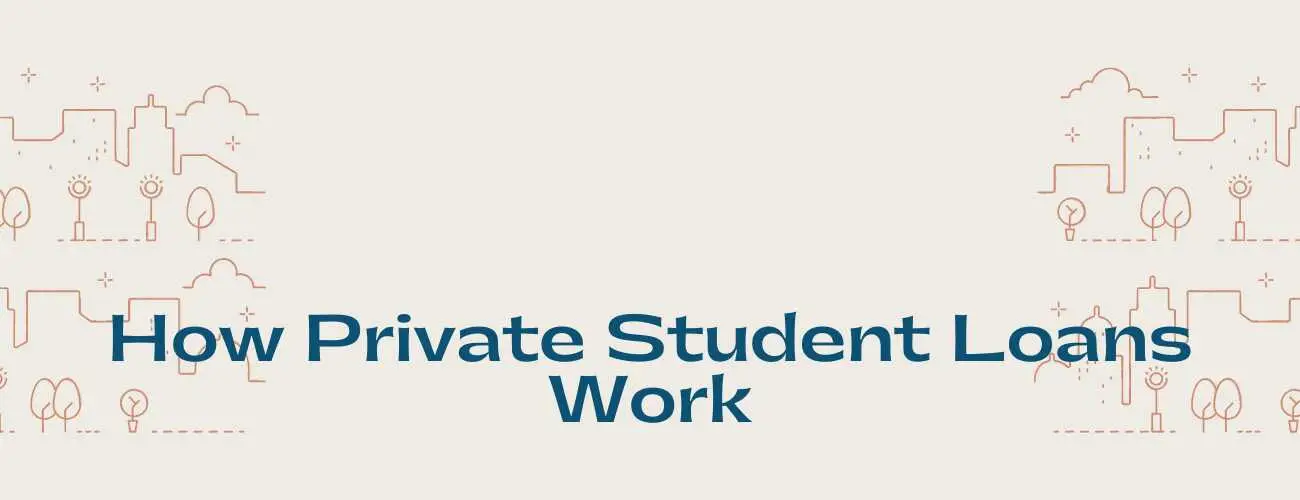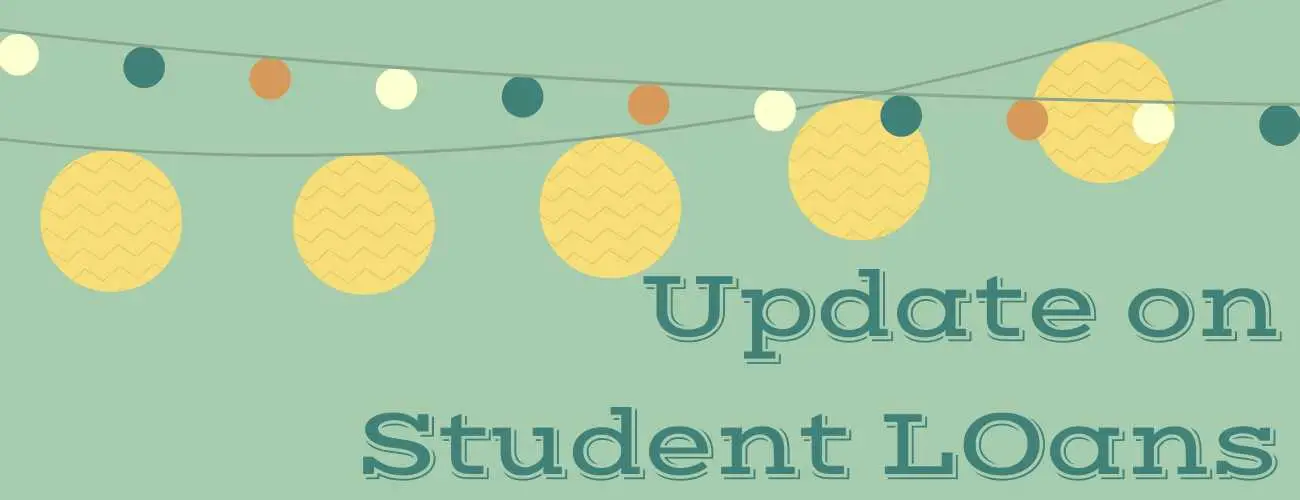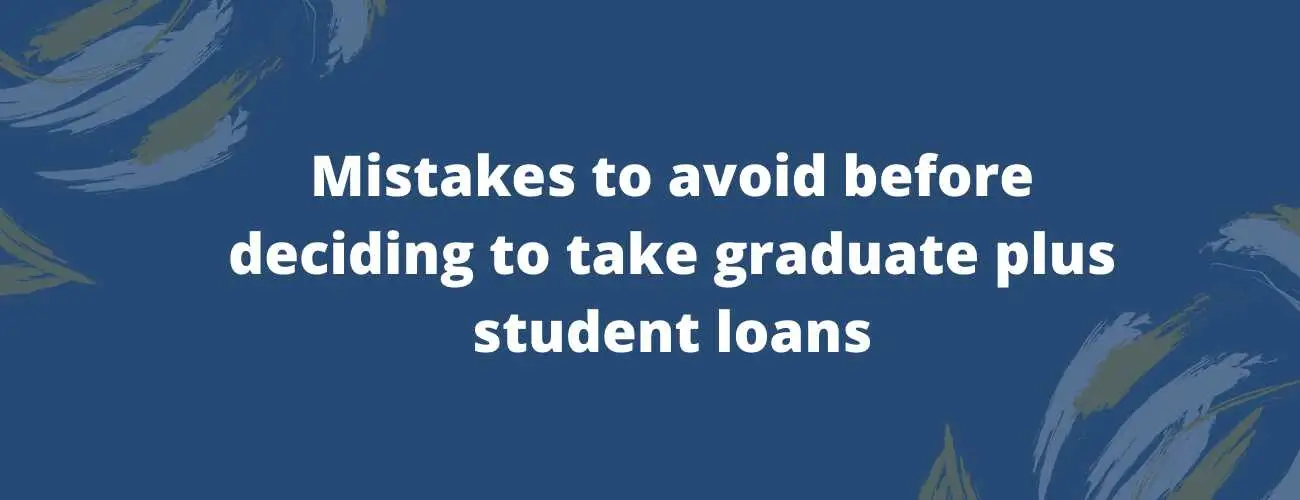Student Loan Debt Management and Statistics
Are you facing difficulties in managing your debt? If yes, then student loan debt management and statistics data can be your savior. Read to explore more.
Updated by Gowtham Ramesh on 27th October 2020
Repayment of the student loan debt is a long and complicated process and it puts a lot of pressure on the borrower's finances. Student loans have an impact on your finances and this can put your credit score at risk. Around forty-four million borrowers owe a sum of $1.5 trillion in student loan debt in the U.S alone. We will be talking about all the possible ways of student loan management. Student loan debt management helps you manage your existing debt and assist you to pay them off effectively.
Most people find themselves unemployed after completing college. Although they may be temporarily unemployed, the unemployment rate for college degree holders was estimated to be at about 2.1% in August 2018.
Even though scholarships and grants are offered to students, they can’t keep up with the rise in the cost of higher education. Hence, this makes it difficult to repay student loans, forcing individuals to fall into debt traps.
To solve this problem, it's quite important to make a debt management plan and understand student loan debt management and statistics to escape falling into the vicious cycle of debt.
List of Contents
- What is a Debt Management Plan
- Types of Debt Management Plan
- Working of the Debt Management Plan
- Enrolling in a Debt Management Plan
- Advantages
- Limitations
- Tips for college students
- Well known Debt Management Companies
- Statistics
- States with high student debt
- States with low student debt
- Student loan debt per person in select U.S.States
- Student loan by age group
- Outstanding student loan types
- Outstanding student loan debt by loan status
- Student loan debt by the repayment plan
- Servicer portfolio by the repayment plan
- Impact of student loan debts
What is a Debt Management Plan?
Debt Management Plans are services that are provided by companies to those people who need help in settling their debts in a fast and easy manner.
It is an agreement between the borrower and his creditor which aids the borrower with his debt repayment. This plan is usually managed by a third party entity or provider. Several companies provide debt management plans.
Before setting the plan, the DMP provider usually puts together a budget for the borrower which shows the amount that the borrower can pay after all other daily expenses. The credit is then paid to the DMP provider which is then passed on to the creditor.
A typical debt management plan provides the services (from a creditor) to bring down the monthly payments and the interest rate on the loans with no penalties on the borrower.
The three parties involved in a debt management plan are
-
The borrower
-
The creditor of the loan
-
Debt Management Company
The debt management company will support you to pay off your debt through affordable lower monthly installments for a period of 3 to 5 years.
Debt Consolidation
Debt Management Plans are broken into an extended category of debt consolidation out of which a set of tools and services are designed to help with the unsecured debts. This is managed and pay off the debt in an effective manner.
Types of Debt Management Plan
Debt Management Plan (DMP) is also called Credit Counseling Programs which is a great way to pay the debts on time.
1 - Standard Debt Management
Standard Debt Management provides a free consultation with a credit counseling agency to evaluate the total debt situation.
In this type of plan, the company helps to negotiate the loans with your creditor to lower the interest rate and monthly payments. The average debt management plan usually takes around 3 to 5 years.
2 - Debt Management by Creditors
Individual creditors sometimes offer debt management suggestions and plan to their borrowers to aid them in their debt elimination. Although this plan is quite different from that offered by credit counseling agencies.
3 - Bankruptcy
When filing for personal bankruptcy, you need to enroll in a debt management plan or a credit counseling program. Under this plan, the debts will be restructured and prioritized by a court.
The usual tenure for this repayment ranges from 3 to 5 years, after which the remaining debts might be discharged.
Functionalities of Debt Management Plan
It is important to follow a step by step procedure to work towards your debt management plan. Below are few steps mentioned to perform the same
1) DMP is provided by credit counseling agencies. Look for non-profit companies that are accredited by NFCC. A financial credit counselor will go through all financial histories to suggest plans to the borrowers on a case-to-case basis
2) The counselor contacts the creditor notifying them that they will be making the payments
3) The counselor seeks concessions from the creditor such as lower interest rates, low monthly payments, or late fees
4) The payments are automated and are electronically transferred to the DMP managing company, who then pay the creditors as per the plan designed
5) The company gives a progress report to the borrowers every month
6) The borrowers have to pay an origination fee and monthly fees for every plan made
7) The fee varies and could be bargained but most companies usually charge from $20 to $30 on an average
8) Make on-time payments
9) The creditors can withdraw the plan if the borrower does not meet the terms of the plan.
Learn more about Debt Settlement and Relief Companies
Enrolling in a Debt Management Plan
Before getting into any debt management plan or debt consolidation plan, understand the terms carefully. It will help you know what sort of agreement you are getting as this could prevent problems that may arise in the future.
When should you enroll?
The debt management plan is not for everyone because not everyone is in a situation that requires debt management. These plans mostly work for the unsecured debts which exclude debts having collateral, automobile loans, and mortgage. If that is your case, then debt management might not help you.
If the aim of your debt management is for a credit card debt, student loans, or medical bills which are unsecured debts, debt consolidation and management is a great option to be considered.
The primary aim of the debt management plan is to serve and help those people who are deeply tied up with debt. If you are dealing with the lower average amount of debt, try to consider other solutions because the debt management plan is not worth the choice for your credit.
In cases where you find yourself in lesser debts, try to build a plan yourself which should be based on the amount that you can afford for payments. You can schedule and further communicate with your creditor regarding any opportunities that may be available for lowering your monthly payments, interest, and fees.
Debt management plans work well for
-
Multiple credit cardholders with balances
-
Those who are unable to make the monthly payment dues in cases such as medical and student loan bills
-
Those buried deep in debt with no foreseeable resolutions
Debt Management plans are bad for
-
People struggling to pay back the automobile loan or mortgage payments
-
People with a lower rate of debts
Worried about college fees? Here is a list of the best student loans to help you!
Advantages
Here are a few pros of why choose debt management plans and how it can benefit you
1 - Avoiding bankruptcy
The debt management plan can help you avoid serious consequences of debt without the need of filing for bankruptcy.
2 - Monthly payments
If you are trying to pay the debt on your own, this plan helps you in the consolidation of all your multiple payments into a single one, which will make it easy to pay it off every month without trouble.
3 - Reducing the stress
It can help reduce your stress level. One way in which DMP helps in reducing stress is by stopping all calls from collection agencies immediately. It may give you the confidence of identifying when the debt will be paid off completely.
4 - Lower rate of interest, payments, and total debts
A debt management company can help you in saving a lot of money using a reduced interest rate, fees, and monthly payments. The provider might even negotiate with the loan provider to cut down the amount in return for faster repayment.
Limitations
Here are a few disadvantages and circumstances when not to choose debt management plans
1 - The closing of credit cards
Before getting into a debt management plan, you are most likely to ask for your existing credit account to be closed. If you are dependent on that credit card, this can be very difficult to process.
2 - Utilization ratio
By closing those accounts, your credit utilization is most likely affected.
3 - Not fulfilling
The debt management service can negotiate for a lower monthly payment with creditors. It can also make provisions for settlements far lesser than the full debt owed. However, this will lower the debt which will, in turn, reflect on your credit score as debt which cannot be repaid.
Tips for college students to manage debt
Here are a few helpful tips you can follow to manage your student loan debts
Collect all the information
Borrowers often think there is only one kind of student loan. Further studies and information gathering will make you discover that there are different types of loans that can be borrowed.
College students usually go for federal or private student loans but under federal loans, there are loans like the Direct Subsidized and Unsubsidized Loans, and Direct PLUS loans offered to the students or parents.
You can take guidance from the Financial Aid Department at your school, or you can perform online research at home, to choose a student loan.
Dodge credit card
It's always great to apply for a credit card for college expenses. Credit Card Companies support these actions as they know students have a great future ahead of them.
Using a credit card to pay back the money, in the end, is in a way, similar to spending money which is not yours. Although they come with numerous perks, it's always crucial to be cautious about the terms and conditions laid out for each card you are interested to apply for.
Repay interest quickly
Student loans are a good way to finance your education. However, the interest that comes with it can make it difficult to pay it off. Student loans from the federal government technically have a better interest rate as you can defer it on the taxes.
Loans that are not on a need basis should be paid first as their interest rates start to accumulate as soon as you finish schooling.
Combining your debts
Consolidating is a very common tool for credit cards and loans. It can even work well with schools and college loan debts. The main advantage of debt consolidation for a student loan is that it can reduce the monthly payments.
Before consolidating, be sure to go through the interest rates and terms in the new contract. Sometimes the new interest rate may be higher or you may lose the benefits of the original loan over the new loan.
Go for alternatives
There are always alternative repayment options to choose from.
Alternative debt management may help reduce your monthly payments but it can also increase your interest rate. A loan that had to be repaid in 10 years can be paid in an additional 5+ years based on the options which you have chosen.
Well known Debt Management Companies
Many Debt Management Companies stand out as top players because of the facilities they provide. Below is the list of the best Debt Management Companies.
1 - Cambridge Credit Counseling
Cambridge Credit Counseling is well known for its extreme clarity and transparency which is something rare in financial institutions.
The company has clearcut fees which are $40 for setup and a $25 monthly fee. It does not exceed $75 and $50. The average interest-rate and payment discounts are mentioned on the website. The company provides transparency reports for a better understanding.
2 - GreenPath Debt Solutions
GreenPath became a financial education loan provider in 1961.
It is quite popular for its customer-friendly features and has a well-designed website. The website includes features such as online chat, tips on budgeting, counseling hours for credits, and more. Individuals can also enroll for personal counseling.
3 - InCharge Debt Solutions
InCharge Debt Solutions has one of the most well-maintained websites. The company provides clarity about fees. For setup, it charges $50 and its monthly charge is $49. It also gives a clear idea about the interest rate on the DMP.
It was accredited by the BBB with an A+ rating and others including the NFCC and COA. It also provides credit counselors who specialize in discussing debt management.
4 - Money Management International (MMI)
MMI was formed in the year 1997. This company is well known for its debt management plans. It is user-friendly and provides a speedy solution to the users facing problems. Having experience of 23 years in counseling and giving out financial advice, their main motive is to help with compassion and kindness.
There are multiple companies offering assistance, but make sure not to fall into any student loan scam, as the scammers may demand some money and promise to help you with debt when in reality, they won't.
Statistics
Student loan debt is now the second-highest consumer debt category, falling slightly behind mortgage debt but higher than credit cards and auto loans.
There are over 44 million borrowers who owe $1.5 trillion in student loan debts in the U.S alone. The student of class 2016 has an average of $37,172 in student loan debt.
Student Loan borrowers should look at student loan debt statistics as it could help in making better decisions related to debt elimination, and decisions relating to repayment options, loan forgiveness, and more.
Total student loan debt - $1.52 Trillion
Total U.S. borrowers with student loan debt - $44.2 Million
Student loan delinquency or default rate - 10.7% (90+ days Delinquent)
The total increase in the student loan debt in the most recent quarter - $29 Billion
New delinquent balances (30+ Days) - $32.6 Billions
New delinquent balance - seriously delinquent (90+ days) - $32 Billion
Source: As of 1Q 2018, Federal Reserve & New York Federal Reserve
States with high student debt
In the 50 states of the United States, these 10 states have the highest student debt with an average ranging from $36,367 to $31,217. Below is a list of 10 states along with their average student loan debt amount.
New Hampshire has the highest average student loan which is $36,367 from the class of 2016. Rhode Island has the least average student loan per student which is $31,217 for the class of 2016.
| Highest average debt states | Average student loan debt |
| New Hampshire | $36,367 |
| Pennsylvania | $35,759 |
| Connecticut | $35,494 |
| Delaware | $33,838 |
| Minnesota | $31,915 |
| Massachusetts | $31,563 |
| South Dakota | $31,362 |
| Maine | $31,295 |
| Alabama | $31,275 |
| Rhode Island | $31,217 |
Highest Average Student Loan Debt By State
SOURCE: TICAS
States with low student debt
These are the states with the lowest number of student loan debt compared to other states. The top 10 states with their average debt are presented below.
| Lowest average debt states | Average student loan debt |
| Utah | $19,975 |
| New Mexico | $21,373 |
| California | $22,744 |
| Arizona | $23,447 |
| Nevada | $24,128 |
| Florida | $24,461 |
| Washington | $24,609 |
| Wyoming | $25,378 |
| North Carolina | $25,562 |
| Oklahoma | $25,856 |
SOURCE: THE INSTITUTE FOR COLLEGE ACCESS & SUCCESS
Utah has the lowest average student loan debt per student which is $19,975 from the class of 2016. Oklahoma has the highest average low student loan debt of $25,856.
Average student loans debt per person in the U.S states
An average of $4,920 is in student loan debt per capita.
-
Arizona - $4,760
-
California - $4,160
-
Florida - $4,480
-
Michigan - $5,330
-
New York - $5,570
-
Ohio - $5,700
-
Pennsylvania - $5,690
-
Texas - $4,510
Pennsylvania, New York, and Michigan are among the highest in student loan debt per capita.
Average student loans debt by age group
For the past 5 years, student loan debt has spanned across all the age categories. The biggest hike in student loan debt comes from the age group of 60 to 69 years. On a financial figure, this group indicates a $35.6 billion hike above the same time.
| Years | <30 | 30-39 | 40-49 | 50-59 | 60+ |
| 2013 | $362.0 | $354.1 | $188.1 | $124.9 | $49.8 |
| 2014 | $370.5 | $383.1 | $207.6 | $136.5 | $57.7 |
| 2015 | $376.4 | $408.4 | $229.6 | $149.7 | $66.7 |
| 2016 | $383.2 | $437.4 | $255.6 | $163.2 | $76.3 |
| 2017 | $383.8 | $461.0 | $278.9 | $177.2 | $85.4 |
SOURCE: FEDERAL RESERVE BANK OF NEW YORK CONSUMER CREDIT PANEL / EQUIFAX
Number of student loans by age group
The highest concentration of student loan falls under the 30-year and below age group.
As of 2017, these are the number of student loans borrowed by the age group.
-
<30 years old: 16.8 million
-
30-39 years old: 12.3 million
-
40-49 years old: 7.3 million
-
50-59 years old: 5.2 million
-
60+: 3.2 million
| Age | Dollars outstanding ($ In Billion) | Borrowers (In Millions) |
| <24 | $8.5 | 0.4 |
| 25-34 | $195.7 | 3.5 |
| 35-49 | $171.2 | 2.6 |
| 50-61 | $48.2 | 0.7 |
| 62+ | $15.1 | 0.2 |
Source: Enterprise Data Warehouse
Outstanding student loan types
Below is the list of loans mentioned and their average debt in each category.
-
Stafford Subsidized loans - $272.2 billion (29.6 million borrowers)
-
Stafford Unsubsidized loans - $463.3 billion (28.4 million borrowers)
-
Stafford combined loans - $735.5 billion (33.0 million borrowers)
-
Grad PLUS loans - $59.6 billion (1.2 million borrowers)
-
Parent PLUS loans - $83.7 billion (3.5 million borrowers)
-
Perkins loans - $7.6 billion (2.5 million borrowers )
-
Consolidation loans - $489.0 billion (12.0 million borrowers)
Outstanding student loan debt by loan status
There is an estimate of $600 billion on Direct Loans among 17.8 million students.
-
In school - $133.5 billion (7.4 million borrowers)
-
Repayment - $600.0 billion (17.8 million borrowers)
-
Deferment - $103.0 billion (3.3 million borrowers)
-
Forbearance - $108.3 billion (2.6 million borrowers)
-
Default - $88.4 billion (4.7 million borrowers)
-
Grace period - $25.9 billion (1.2 million borrowers)
You can notice that during the repayment phase maximum borrowers have debt in student loans. So it is very important to manage your student loans while at school from the beginning.
Student loan debt by the repayment plan
There are around 12.8 million borrowers with $233.5 billion of student loan debt.
-
Level Repayment Plan (<10 years) - $233.5 billion (12.8 million borrowers)
-
Level Repayment Plan (>10 years) - $79.1 billion (1.8 million borrowers)
-
Graduated Repayment Plan (<10 years) - $88.3 billion (3.3 million borrowers)
-
Graduated Repayment Plan (>10 years) - $14.3 billion (0.3 million borrowers)
-
Income-Contingent Repayment (ICR) - $27.6 billion (0.6 million borrowers)
-
Income-Based Repayment (IBR) - $192.0 billion (3.6 million borrowers)
-
Pay As You Earn (PAYE) Plan - $68.3 billion (1.2 million borrowers)
-
Revised Pay As You Earn (REPAYE) - $108.8 billion (2.0 million borrowers)
The debt statistics are based on the various repayment programs that are given above.
Servicer portfolio by the repayment plan
As of 31st of December 2017, AES/PHEAA and Navient serviced the biggest portfolios of student loans in repayment. FedLoan Servicing is the biggest service provider of Federal Direct Loans.
Learn more about FedLoan Servicing
Other importance of student loan debt management
-
Around 68% of seniors who graduated from public and non-profit colleges in 2015 have loan debt
-
1.3 million students graduated with student loan debt in 2012 out of which 66% of the graduates are from public colleges and 75% of them graduated from private colleges
-
Around 47% of private loan borrowers in 2011-12 have borrowed a lesser amount compared to the Federal Stafford Loans
-
Private loan volume peaks were recorded to be around $18.1 billion between 2007-2008. This volume reduced to about $7.8 billion in the year 2014-2015
-
6% of undergraduates - 1,373,000 students used private loan in 2011-2012
-
4/5 of 2016 graduates are in student loan debts
-
The average debt of Public Colleges in 2012 was $25,550 and that's 25% higher compared to 2008
-
The average debt of Private Colleges in 2012 was $39,950, that's 26% higher compared to 2008.
Impact of student loan debts
Recent studies reported that 70% of college students who graduated leave the school with an average loan debt of $38,000. The debt of the age group doesn't go away swiftly. Student loan debt is one of the main reasons why young students fail to start a venture or business.
Economists report that millennials have to double up the amount of student loan repayment, far more than their parents do towards retirement if they plan on having a comfortable lifestyle after they leave the job.
Verdict
Debt Management Plans may negatively affect your credit score at the beginning. Moreover, there is no guarantee that you will be out of debt because some plans do not work and leave the borrowers in a worse situation than they first were in. So, you must consider your situation carefully and evaluate how DMP may affect you in the long term.
As a last resort, if DMP is in your favor, you may consider approaching DMP providers. Do so after thorough research and choose the most trusted providers who are suitable for your case.
| Minumum Credit Score | Apply in as little as | Variable APR | Fixed APR | ||
|---|---|---|---|---|---|
 | Not Available | 15 minutes or less | 2.95 | 4.74 | View disclosures |
 | 620 | 2 minutes | 5.38%-16.99%1 | 4.43%-16.99%1 | View disclosures |
 | Not Available | 15 minutes | 1.13% - 11.23%¹ (with autopay) | 3.50% - 12.60%¹ (with autopay) | View disclosures |



93.jpg)


28.jpg)
